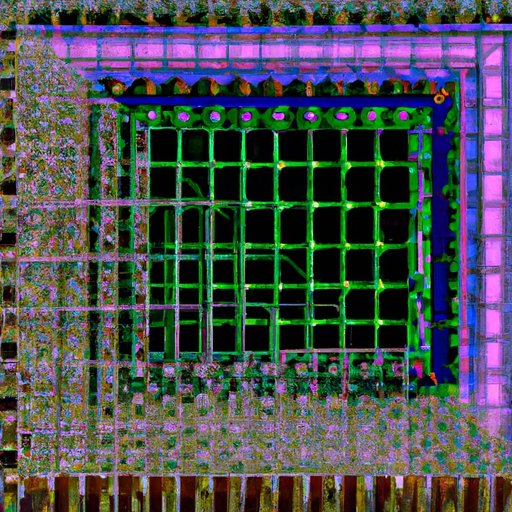Introduction
Quantum computing is an emerging technology that has the potential to revolutionize the way computers are used in the future. It utilizes the principles of quantum mechanics to store and process data in ways that are vastly different from conventional computers. In this article, we will explore how a quantum computer works, from its basic components to its various architectures and algorithms.

Exploring the Basics of Quantum Computing
To understand how a quantum computer works, it’s important to start by looking at its basic components. A quantum computer is composed of qubits, which are the fundamental unit of information in a quantum system. Qubits are analogous to the bits used in traditional computing, but they have the unique ability to exist in multiple states simultaneously. This is known as the principle of superposition, and it allows qubits to store and process far more information than traditional bits.
Qubits can store information in two possible ways: as a ‘0’ or a ‘1’. However, they can also exist in a state that is both a ‘0’ and a ‘1’ at the same time. This is known as a superposition of states, and it is what gives quantum computers their immense processing power. In addition to qubits, quantum computers also require a number of other components in order to function, such as a quantum processor, a quantum memory, and a quantum network.

An Overview of Quantum Computing Architectures
In addition to understanding the components of a quantum computer, it is also important to understand the various architectures that are used to construct them. The most common type of architecture is the quantum circuit model, which uses a series of interconnected qubits to construct logical circuits. This type of architecture is well suited for performing tasks such as factorization and search algorithms.
Another type of architecture is adiabatic quantum computing, which uses a single qubit to represent an entire set of data. This type of architecture is better suited for optimization problems, as it can quickly find the most efficient solution to a given problem. Finally, there is topological quantum computing, which uses qubits arranged in a specific pattern to create a quantum circuit. This type of architecture is well suited for error correction and fault-tolerant computing.
How Do Quantum Computers Perform Calculations?
Once the components and architecture of a quantum computer are understood, it is important to examine how it actually performs calculations. This involves understanding the concept of superposition, as well as the role of entanglement in quantum computing. Superposition is the ability of a qubit to exist in multiple states simultaneously, and it is what allows quantum computers to perform calculations much faster than traditional computers.
Entanglement is another key concept in quantum computing. Entanglement occurs when two or more qubits become linked together, so that any changes to one qubit will affect all of the other qubits that are entangled with it. This is what allows quantum computers to solve complex problems quickly, as they can take advantage of the entangled qubits to find solutions faster than traditional computers.
Examining Quantum Algorithms and Applications
Now that we have explored the basics of quantum computing, let’s take a look at some of the algorithms and applications that are enabled by this technology. One of the most well-known examples is Shor’s algorithm, which is used for factoring large numbers. Another example is Grover’s algorithm, which is used for searching databases quickly. Additionally, quantum computing has enabled new applications such as quantum machine learning, which can be used to develop powerful artificial intelligence.

Analyzing the Security Benefits of Quantum Computing
In addition to enabling new algorithms and applications, quantum computing also offers unique security benefits. These include quantum key distribution, which uses quantum mechanics to securely send encrypted messages, and quantum cryptography, which uses quantum properties to create unbreakable codes. These technologies offer unprecedented levels of security, making them invaluable for protecting sensitive data.
The Impact of Quantum Computing on Future Technologies
Finally, it is important to consider the potential impact of quantum computing on future technologies. As quantum computers become more powerful, they could be used to advance artificial intelligence, revolutionize medicine, and enhance business processes. By unlocking the potential of quantum computing, we could see dramatic advances in the fields of science, technology, and industry.
Conclusion
In conclusion, quantum computing is an emerging technology that has the potential to revolutionize the way computers are used in the future. By exploring the basics of quantum computing, examining its architectures and algorithms, and analyzing its security benefits and potential applications, we can gain a greater understanding of this fascinating technology and its implications for the future.


